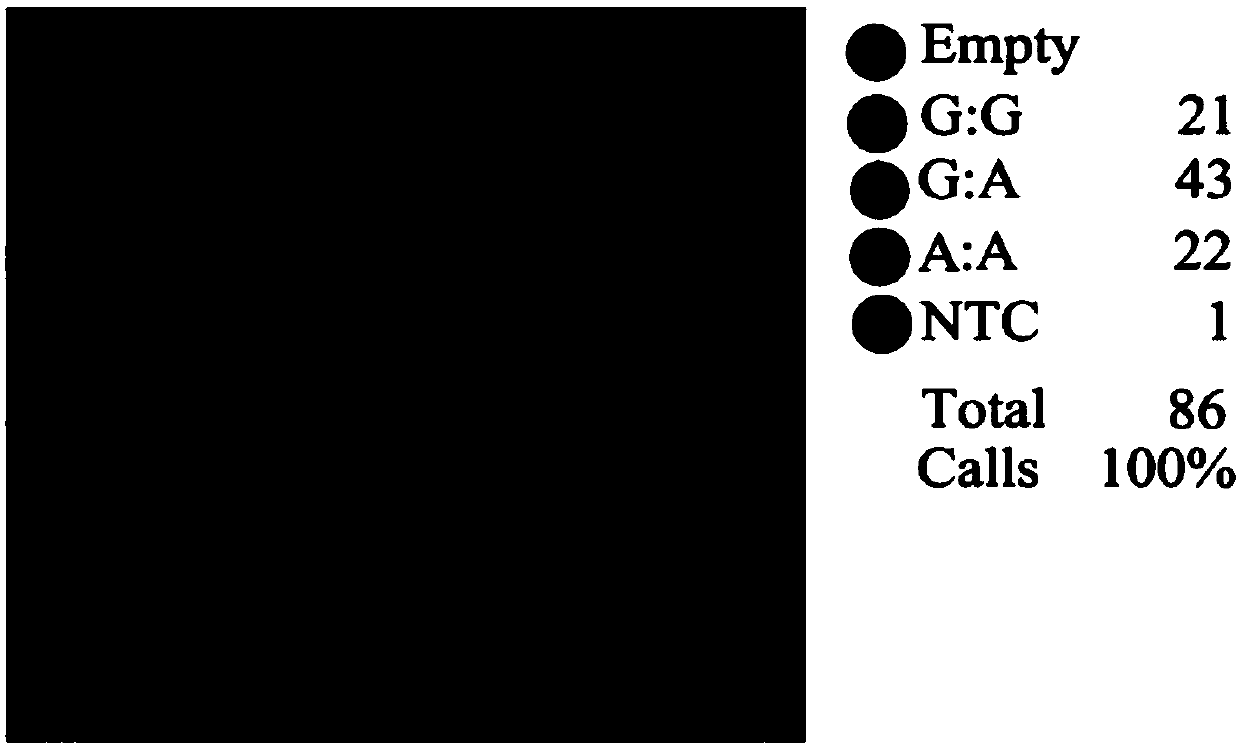KASP (competitive allele specific PCR) molecular marker and method for detecting low-amylose content gene Wx<mq> of rice
A low-amylose, molecular marker technology, applied in biochemical equipment and methods, recombinant DNA technology, and microbial assay/inspection, etc., can solve problems such as high cost and time-consuming, speed up the breeding process, and improve detection efficiency. Effect
- Summary
- Abstract
- Description
- Claims
- Application Information
AI Technical Summary
Problems solved by technology
Method used
Image
Examples
Embodiment
[0028] 1. Rice material
[0029] The experimental materials used were 'Nanjing 9108', 'Shen 01B' and F 2 generation groups. 'Nanjing 9108' was selected by the Jiangsu Academy of Agricultural Sciences and carried the low amylose content gene Wx mq soft rice japonica varieties. 'Shen 01B' is an early maturing late japonica maintainer line bred by the Institute of Crop Breeding and Cultivation of Shanghai Academy of Agricultural Sciences, with medium amylose content. f 2 The generation population contained 83 plants. In the first season of 2017, the test materials were planted at the Zhuanghang Comprehensive Experimental Station of the Shanghai Academy of Agricultural Sciences, and the water and fertilizer were routinely managed.
[0030] 2. DNA extraction from rice leaves
[0031] Rice leaves were collected at the tillering stage, and 100 mg of leaves were added to liquid nitrogen to fully grind, and the ground powder was extracted with a plant genome DNA extraction kit fr...
PUM
 Login to View More
Login to View More Abstract
Description
Claims
Application Information
 Login to View More
Login to View More - R&D Engineer
- R&D Manager
- IP Professional
- Industry Leading Data Capabilities
- Powerful AI technology
- Patent DNA Extraction
Browse by: Latest US Patents, China's latest patents, Technical Efficacy Thesaurus, Application Domain, Technology Topic, Popular Technical Reports.
© 2024 PatSnap. All rights reserved.Legal|Privacy policy|Modern Slavery Act Transparency Statement|Sitemap|About US| Contact US: help@patsnap.com










